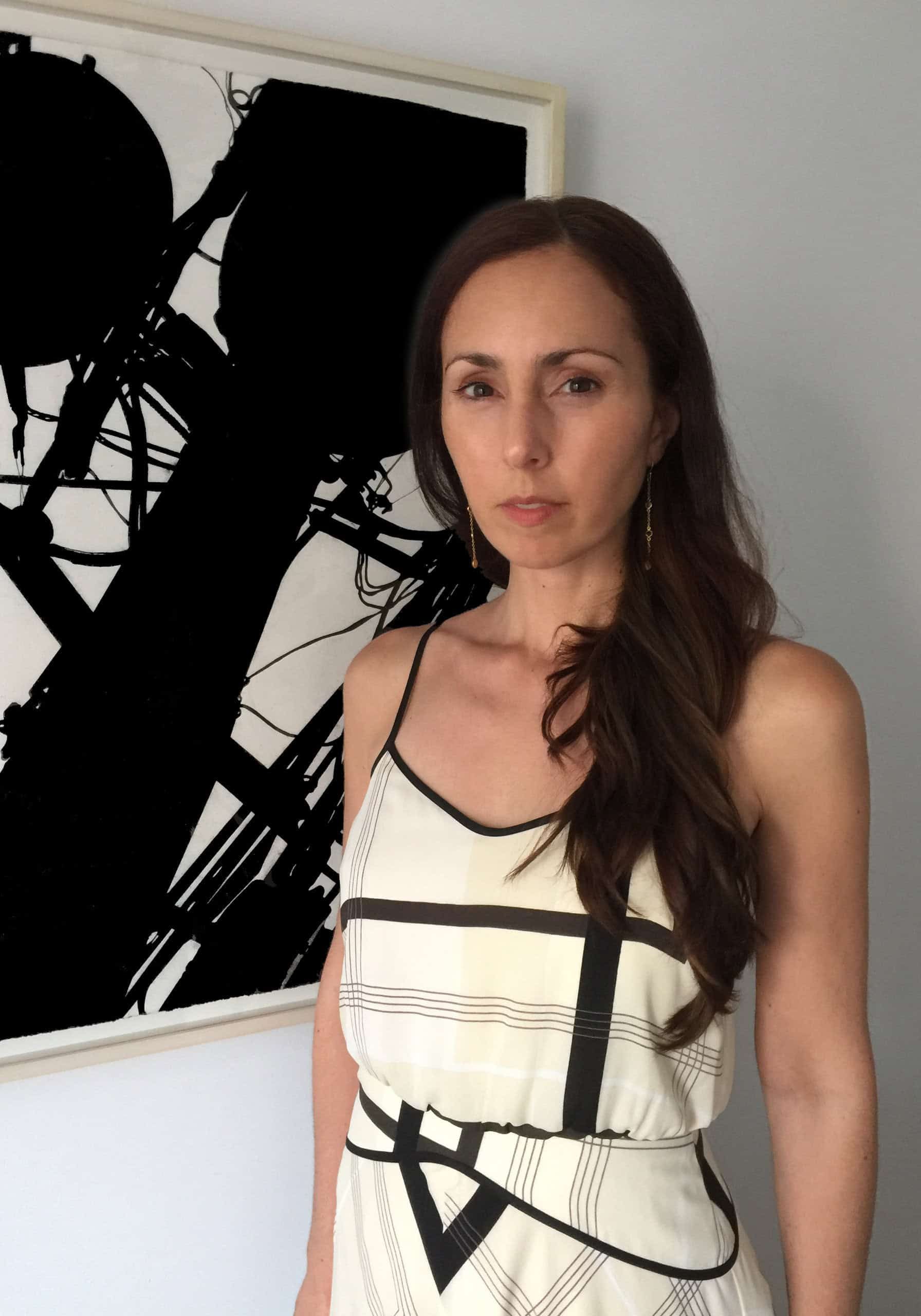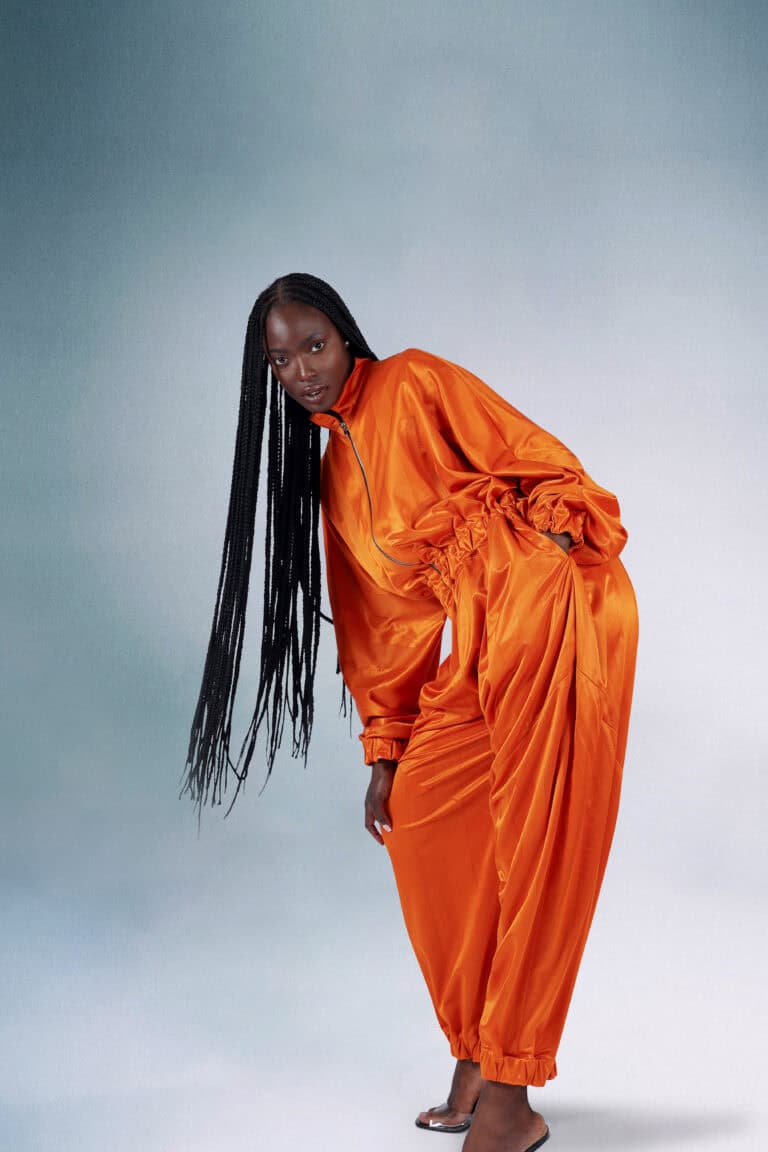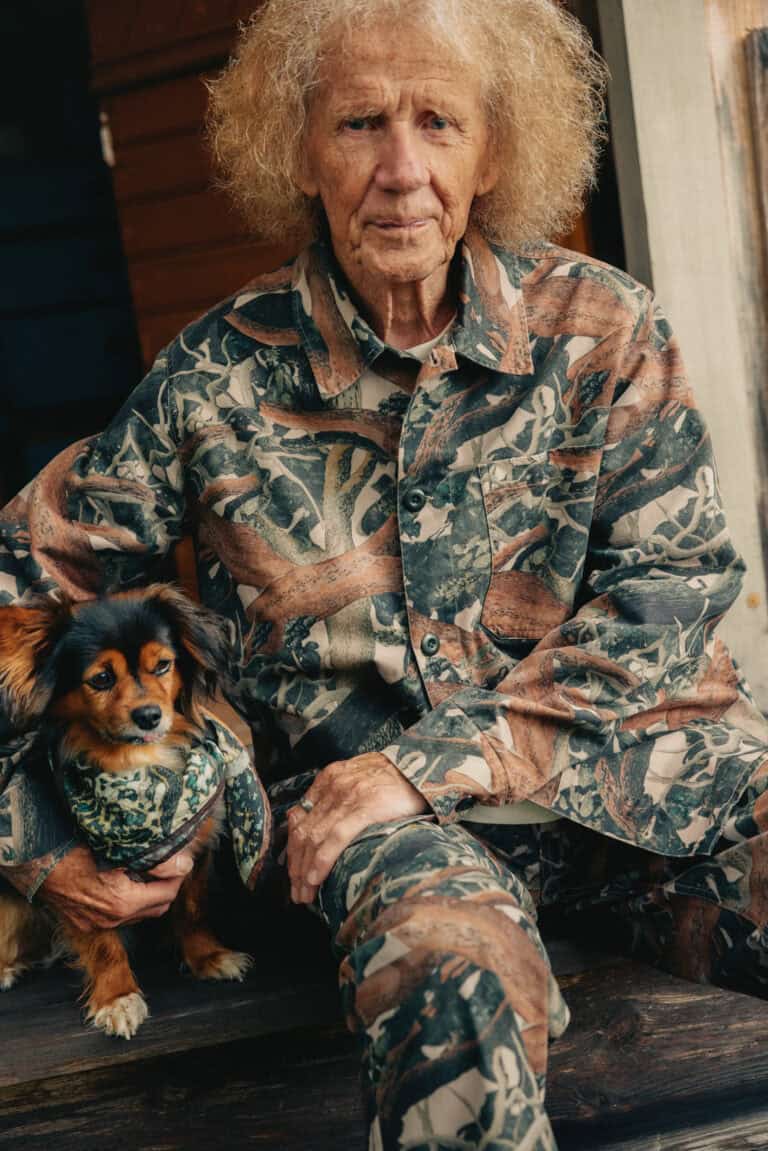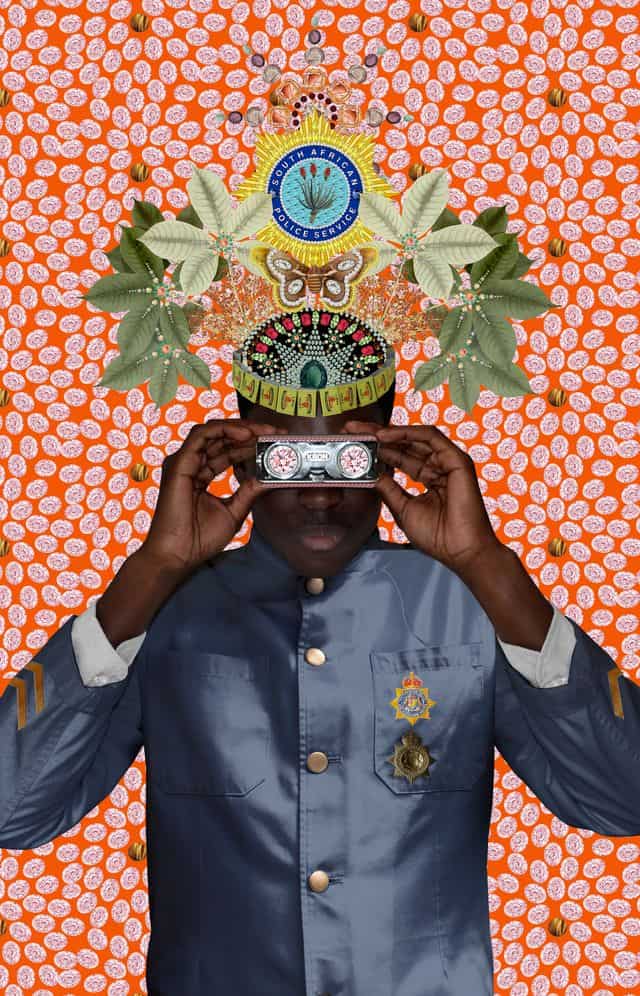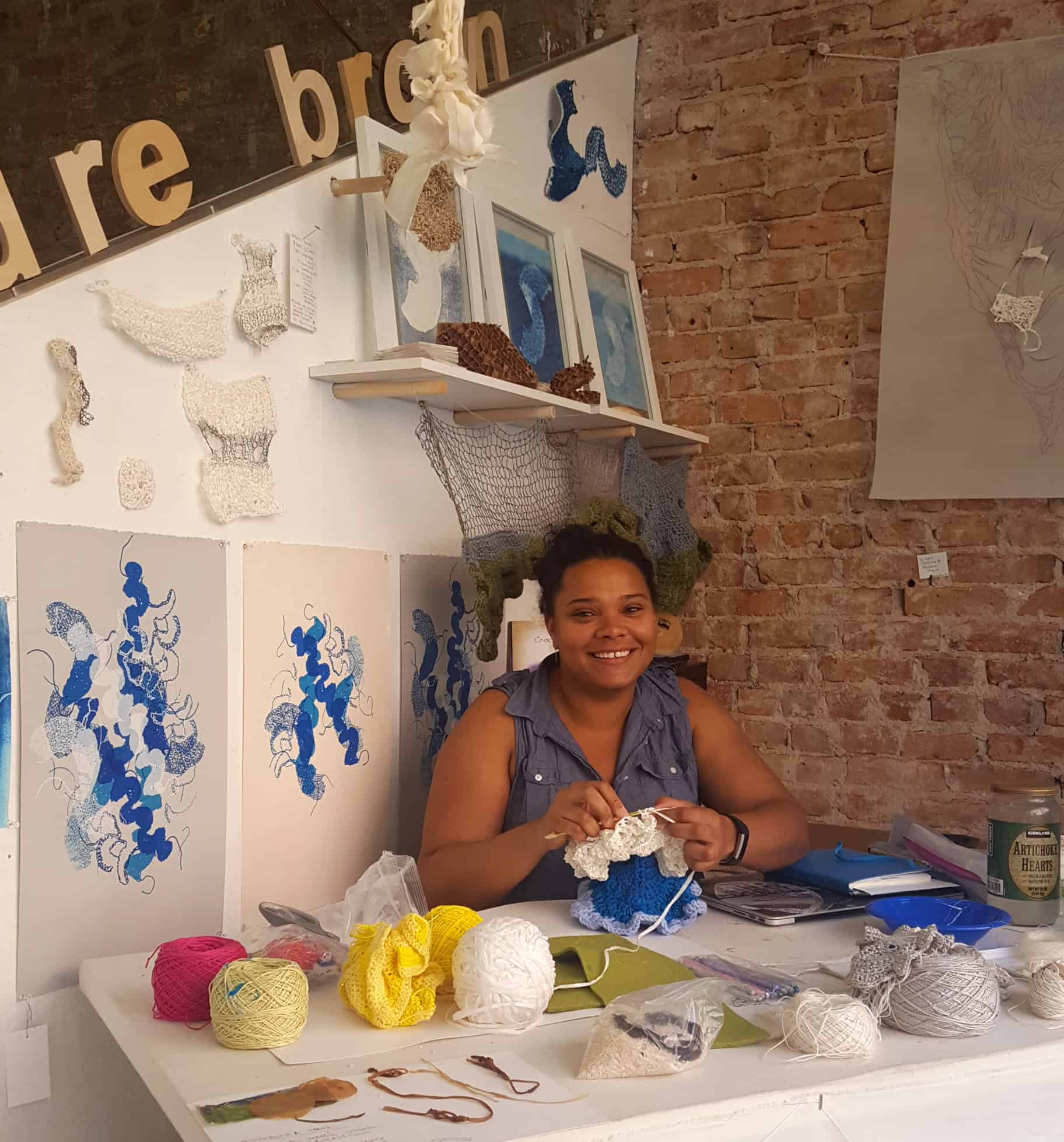
Diedre Brown is Reclaiming Urban Coastlines One Stitch at a Time
Stacy Seiler
Diedre Brown is the September 2017 featured Artist In Residence at the Textile Arts Center in Manhattan. As you walk by the Center’s large plate glass window on West 8th Street and look up, you will spot Diedre sitting at her desk diligently crocheting hyperbolic forms that are reminiscent of sea life. She is surrounded by colorful prints, mysterious organic objects and carefully labeled crocheted specimens. But at first glance what appears to be an exploration in material, is actually part of Diedre’s larger effort to “create textiles that generate resilient coastal habitats” and “foster the growth of community-crafted spaces that inspire one’s sense of wonder and imagination.”
IRK Magazine paid a visit to Diedre’s studio for an in-depth look at her unconventional use of textile design, which combines the fields of natural science, art, design and Bio-Arch Habitats to build stronger coastal communities both literally and figuratively.
IRK: You are the first textile artist that I have encountered who uses fiber, specifically the crocheting of fiber, to positively impact costal habitats. How did you find your way to this practice?
Diedre Brown: When I did my master’s thesis at Parsons School of Design, I focused on Biology Architecture Habitat, which looked at the idea of a material that could be generative and resilient to storm surge. For me that material was crocheting in hyperbolic plane [hyperbolic plane is a surface in which the space curves away from itself at every point]. Bio-Arch Habitat defines the resilient space between nature and urbanism and I’ve always had this passion too for decaying buildings. I grew up in New York City, and I was really inspired by the artist Gordon Matta-Clark who would go into these abandoned spaces and turn them into something different. I thought about how the coastal edges here in New York have gone through a period of abandonment, which brings in a different use that’s often through nature and how nature finds a way. And so my thesis site was Bush Terminal Park on the Brooklyn waterfront, which was interesting because it had been abandoned for 30 years. I remember being a kid and knowing that no one was there and it was a place that you did not want to go to. When I first read about the park’s revitalization in 2010, one of the impetuses for starting a park there was because nature actually took over. You had trees growing on old docks. There was a huge shore bird nesting site that developed. So it was interesting for me to say, “Well, okay, how can we take that even a step further, and how can this area become something resilient but also something that the surrounding community can appreciate.”
IRK: So as you began to evaluate the needs of Bush Terminal Park through a Bio-Arch lens, what led you to the development of your hyperbolic crocheted habitats? I have to say, your pieces feel as if they belong in the ocean. They even look like sea anemone.
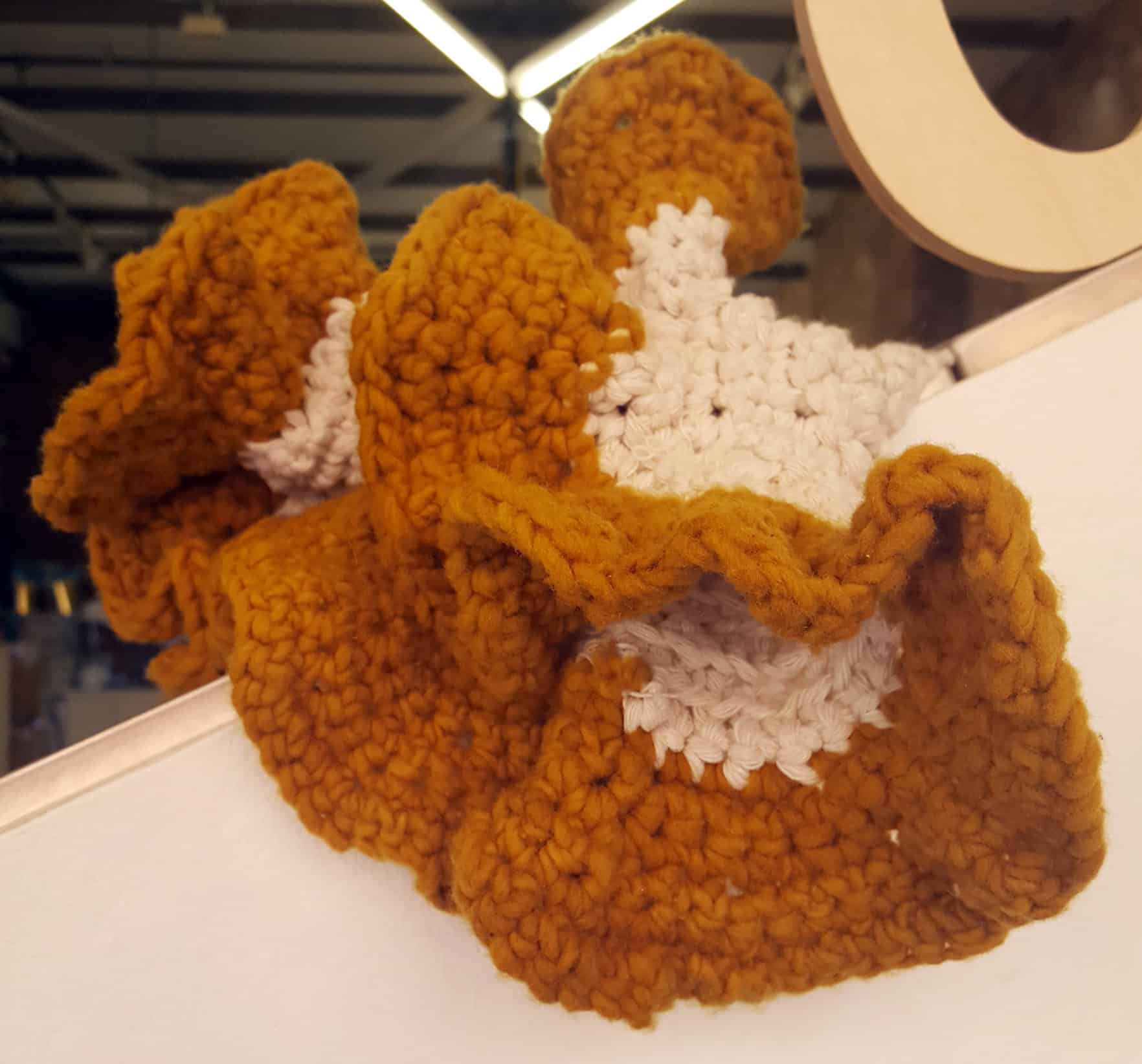
Diedre Brown: I wanted visitors to learn about nature and the environment while carrying on their own traditions, and traditions for me had always been related to textiles. For instance, I can remember for my communion my mother made my dress, and I still keep it and remember the tradition of it and how it brought our neighbors together wanting to chip in and help. I wanted architecture to start having that communal sense again, because costal resiliency in particular is something people have to be aware of. In 100 years Bush Terminal Park will be flooded, but how can we still use that problem as an advantage? How can you get people to have their quiceaneras and festivals in a place that is personal to their neighborhood?
IRK: So you are inviting people to actively reclaim the space and form emotional attachments through experience and memories.
Diedre Brown: Yes, and that brought me to the textiles and hyperbolic form because I had read the mathematician Daina Taimina’s work and I was lucky that the Museums of Art and Design was hosting “Crocheted Coral Reef” by Margaret and Christine Wertheim and that was another important aspect to my project in two senses; one because the action of “Crocheted Coral Reef” is based on creating these satellite communities that come together. The Wertheim sisters do crochet and direct the piece, but there are local satellite units that come and pitch in to create these organisms. The second part, which Dr. Taimina’s work brought up, was that hyperbolic geometry is endemic in everything. It’s how our DNA comes together, it’s how the brain folds when we are developing and it’s how corals develop. So by studying hyperbolic geometry to create an intervention, that was replicating that, but using the material of it also adds a source of replication, renewal and regeneration. And for my thesis I was also doing other materials studies in bio-plastics from which I grew these little seeds of Morning Glories and Flax from the bio plastics. I actually don’t have them anymore; well… the Morning Glories are still on my terrace, but by allowing enough time for the root structure to take over, which grows in a hyperbolic geometry, that geometry could then sustain storm surge and water flow onto the coast. I thought of it in a terrestrial solution as being this one place where this surrounding community could come, learn about environment, engage with each other, create new traditions, but also have habitat that comes and attracts. Habitat itself is the strongest form of coastal resilience.
IRK: How did your focus move from land to water?
Diedre Brown: Well, my thesis also looked at the site from an aqueous perspective because the Bay Ridge Flats run right through it. Since the Flats are at a higher topography in the water, and they have grasses growing on them already, I thought about how to take advantage of that. Sort of like the ideas that Kate Orff of SCAPE was working with in Oyster-tecture, and develop it into something that was literally built of that. What I did with this model of the site is that bio-plastic crocheted lines actually run tangential to the wave front so that as time goes on and species then habitat that area, it actually has the measure of mitigating wave interference.
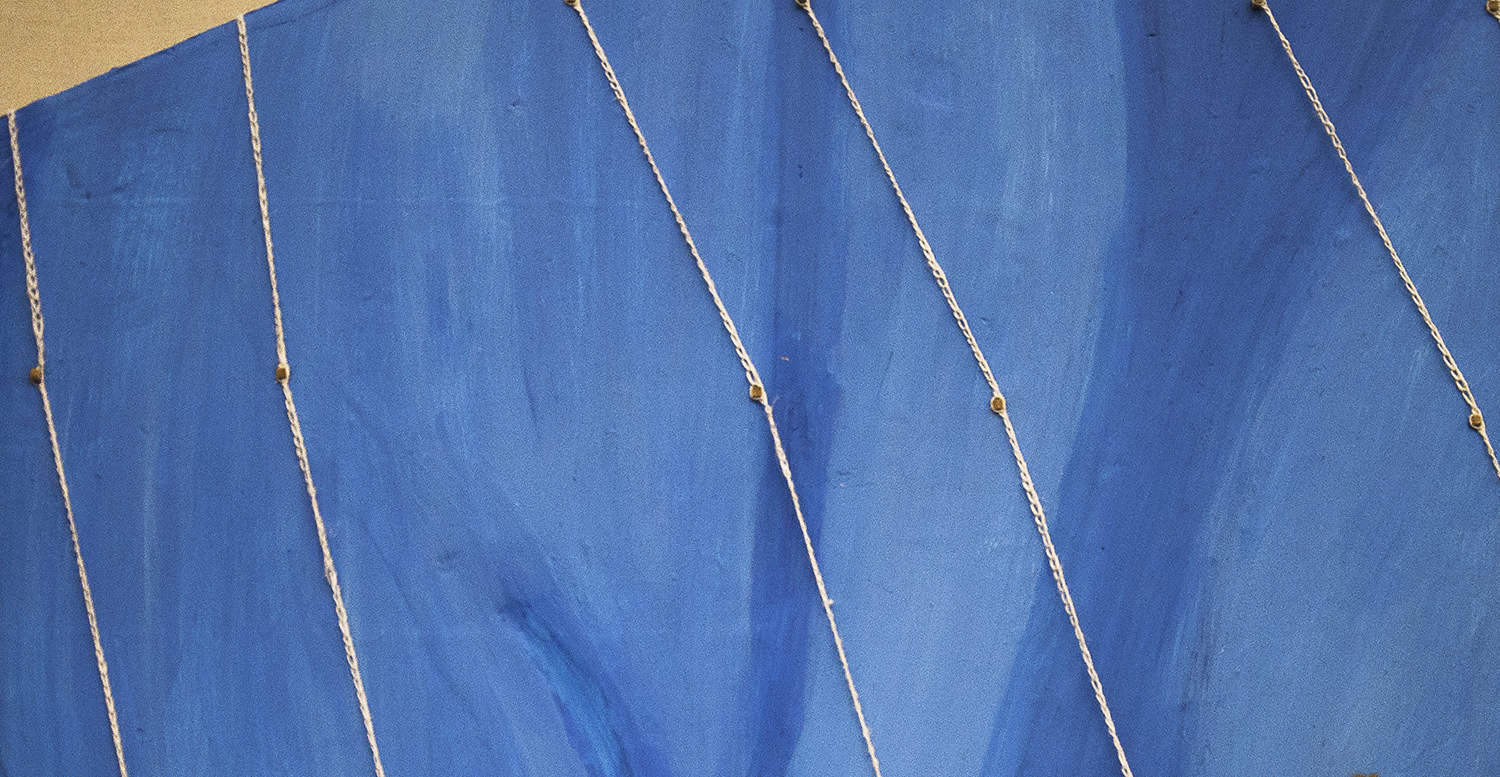
IRK: With all the possible options of creating form through fiber, why did you choose crochet?
Diedre Brown: Well, crochet per stitch has three times the tensile strings of knitting, making the form a better place to generate something.
IRK: This is truly amazing! You are using fibers to communicate with sea life by developing forms that encourage them to build habitats.
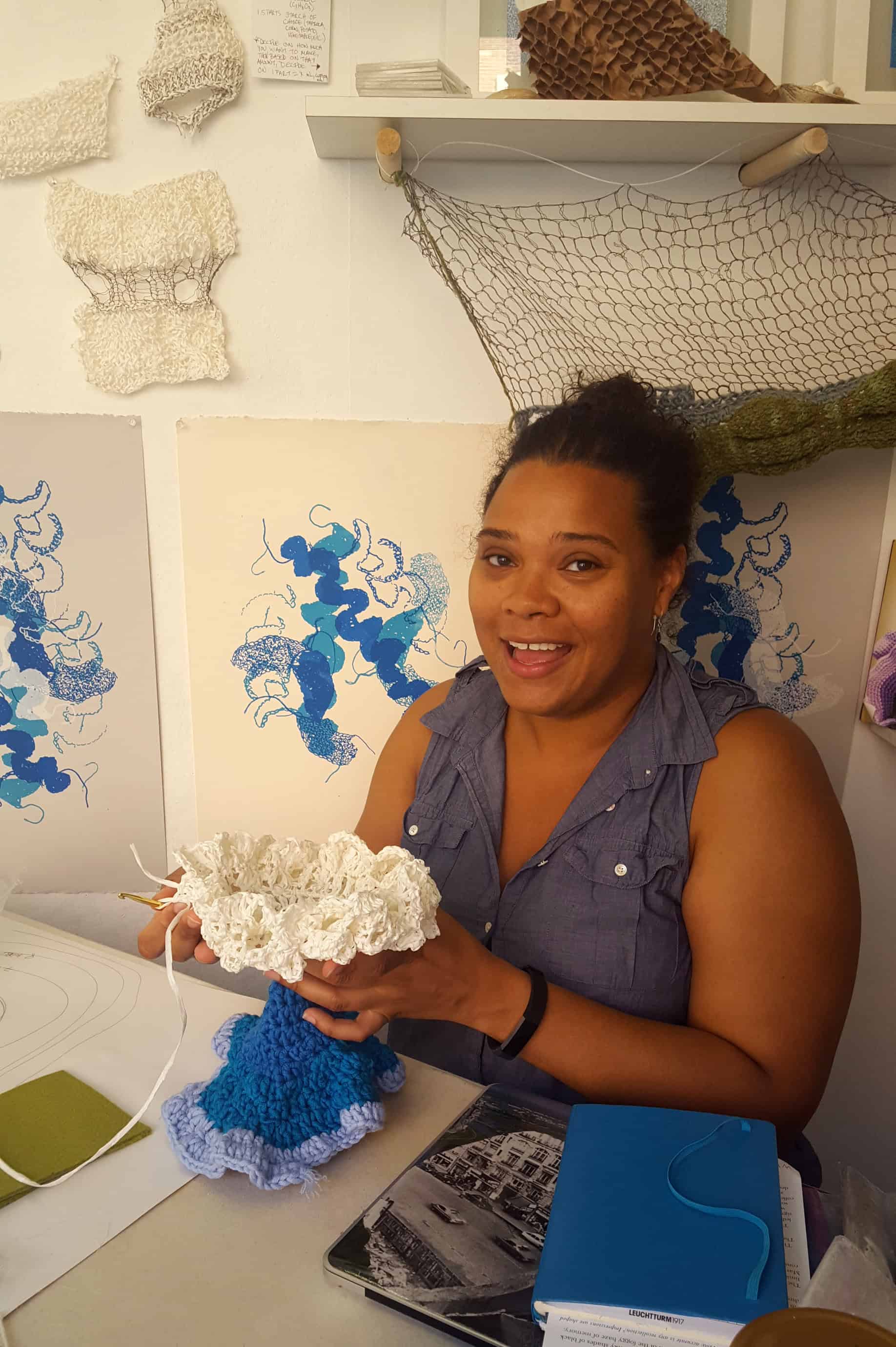
IRK: And is this what you are focusing your residency on during your month at the Textile Arts Center?
Diedre Brown: So my residency here is two fold. It was looking further into crochet, which is how I found out about tack [to fasten pieces of cloth together with long loose stitches, before sewing them together]. If I wanted to manipulate those geometries I had to actually start looking at the tension that gets created by an individual stitch. So this is my latest piece, which was the big discovery of yesterday, which was about how to actually create environments that, because of their geometry, are more lenient to have a habitat grown within them. So this is using three different types of algorithms to create a self-supporting structure that’s crocheted. Then the other side of what I’ve been doing in the residency is looking at the materials. Right now I’m studying crochet through pine paper, Marino wool, bamboo, raw silk, linen, but also developing the materials. My bio-plastic, which is now a more advanced bio-plastic is made with materials that are essentially compost.
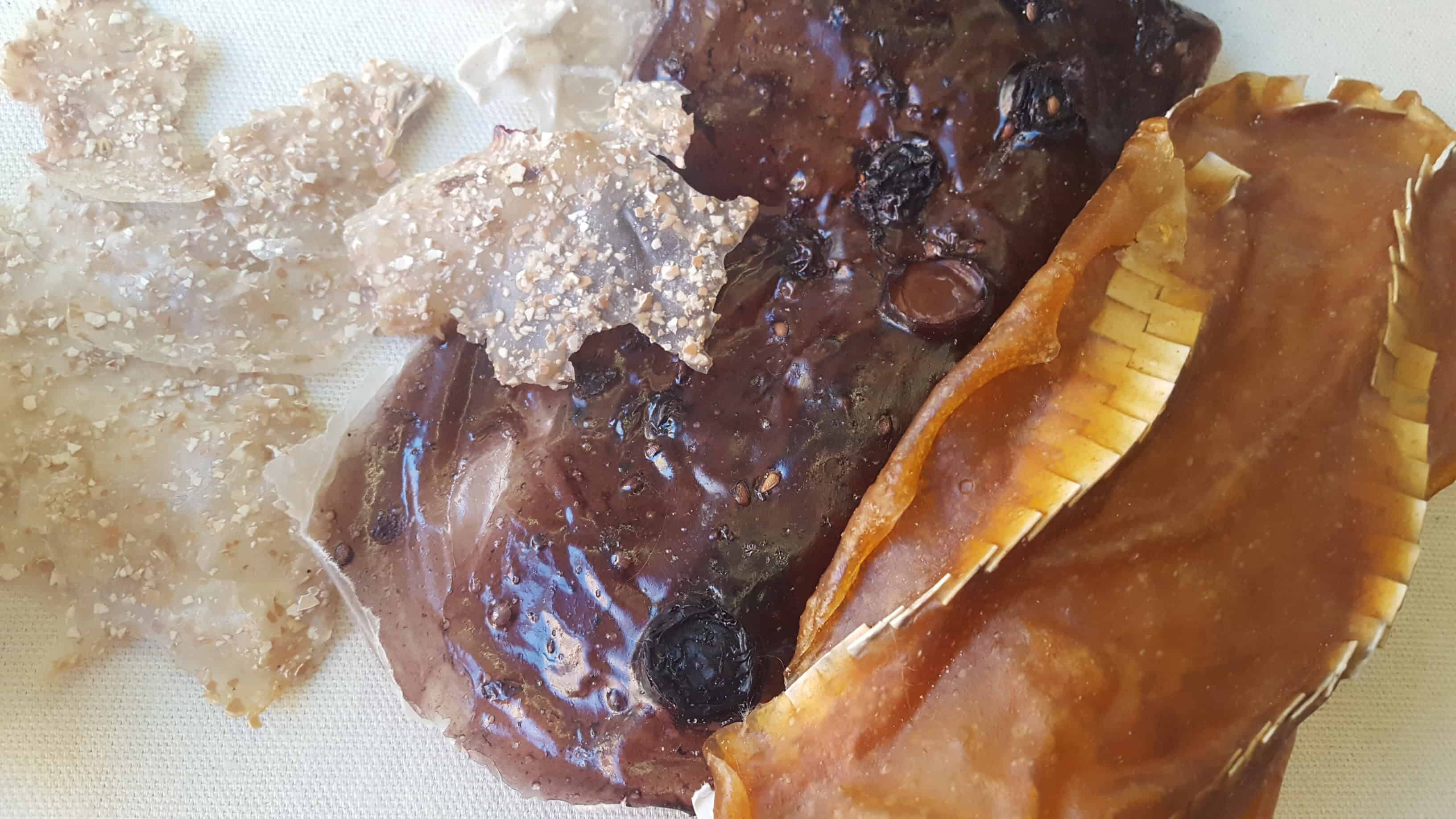
IRK: What is the shelf life of the bio-plastics before they dissolve.
Diedre Brown: Right now the harder plastics that I make, like the ones that are made of sand are about two months. The ones that have a high content of water are less then that. So it will degrade but the other theory is that if it is made out of a tighter weave through the crochet and also incorporating more durable materials like local sand, that in turn as it degrades it can also contribute to the life of the habitat that it’s supporting. So I’ve been looking at Kombucha yarn with different strengths and tensities.
IRK: Like Kombucha tea?
Deidre Brown: Exactly. And I also met with AlgiKnit, and have been crocheting with their yarn too since AlgiKnit is made with alginate and alginate is the component of agar, which is the most supportive growing force there is. So even if this does deteriorate, since you are speeding up growth, you’re allowing that organism to take hold longer on its own.
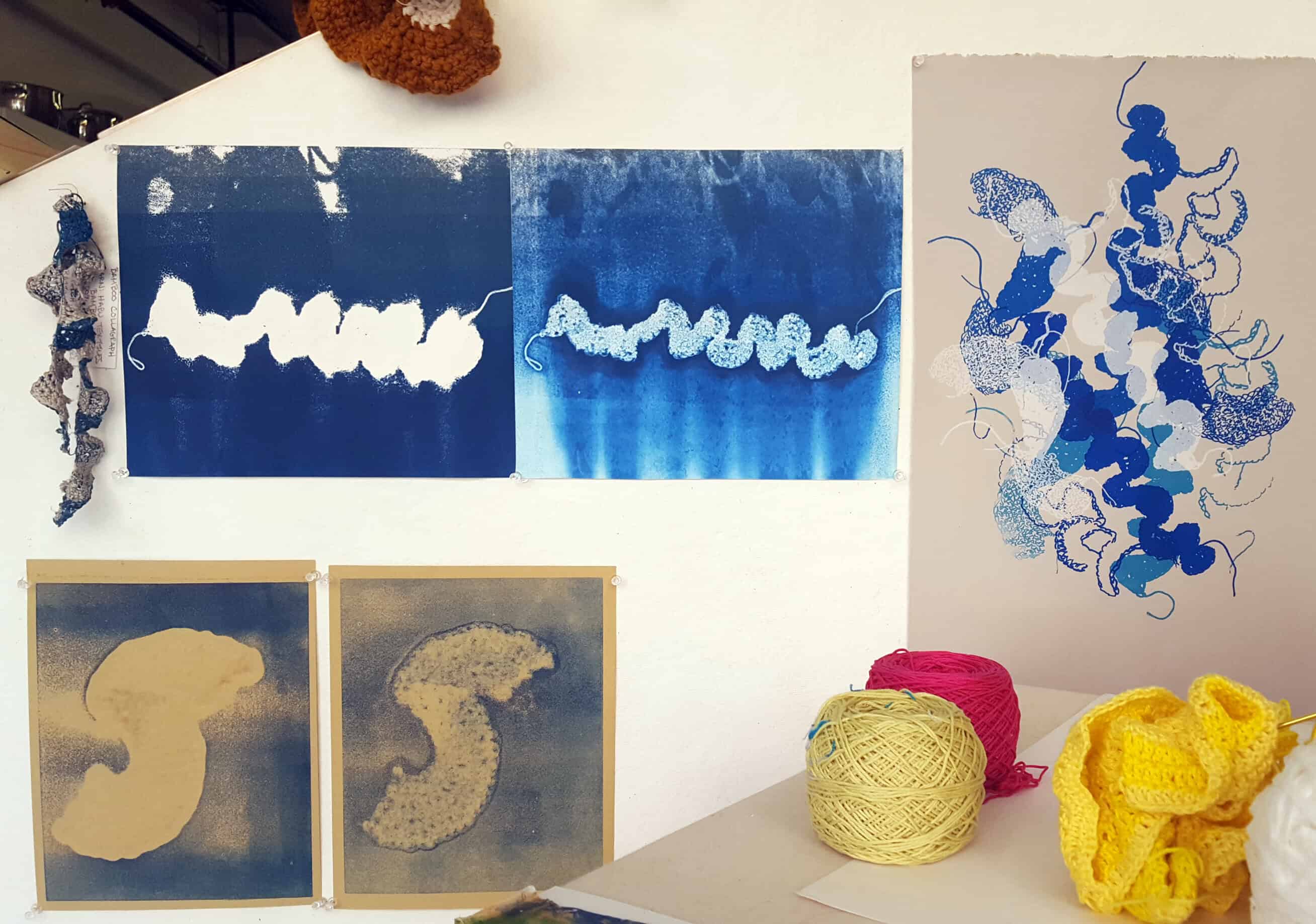
IRK: You also have prints throughout your studio that seem to be imprints of your crochet pieces. How do the prints inform your work?
Diedre Brown: The screen prints became a way to analyze the pieces I was making. I learn through haptics. As a kid I had a hard time in school until I realized that I learned kinesthetically. So instead of making a 3D scan of the piece, I put the textile on a piece of Plexi glass that’s been covered with ink. I run it through a French tool press and I get the first print. Then I remove the textile and I run the plate again, and I get this very photographic rendering of the textile. Then I’ll run it a third time and I’ll get the ghost. Then later as I was looking at the textile and the prints after they dried, I realized that I was also looking at the different layers of the textile; the bottom, the in-between and the upper most layer. So I took that a step further and I realized through screen-printing, if I made a Mylar drawing and overlaid the actual textile onto the screen as I exposed it, I could get several different overlaps of where I could possibly use points to connect and create more complex geometries. I then started using this process as a way to inform the crochet.
IRK: I have to say; I am just fascinated… and thankful. Because of your research in textiles and Bio-Arch Habitats we will be able to retain our costal edges for a longer period of time using sustainable methods. Your work is truly innovative!
You can learn more about the work of Diedre Brown, the Textile Arts Center of New York and New York Textile Month, organized by Li Edelkoort, Dean of Hybrid Design at The New School. For our exclusive interview with Li Edelkoort, order a copy of our latest issue “Futurism” today!
Share this post
Stacy Seiler is the Art Editor of Irk Magazine, joining the publication in August 2016. An accomplished artist, designer, writer and Assistant Professor at Parsons School for Design, Stacy has been a pioneer in the design industry since 1997. She began her career as a web designer and programmer focused on the corporate identity and branding of Fortune 500 companies including: FOX, News Corporation, AIG and McGraw-Hill.
For the past 11 years, Stacy has lectured on topics of Design Iteration, Typography, Information Visualization, Fashion and Fine Art at the esteemed Parsons School of Design, while balancing her time as a Contributing Writer of Arts and Culture at Downtown Magazine and a Docent of History and Preservation at Judd Foundation in New York City.
Through her research and drawings, Stacy’s art practice focuses on preserving the cultural past of New York City and beyond by exploring current issues of neglect and decay surrounding industrial architecture and its iconic connection to working-class communities. She has exhibited both nationally and internationally over the past 15 years.
Stacy graduated from the Maryland Institute College of Art, with a BFA in Fine Arts and a Minor in Art History. She received her MFA in Fine Arts from Parsons. Her work can be found on stacyseiler.com along with her daily musings on Instagram
Read Next

